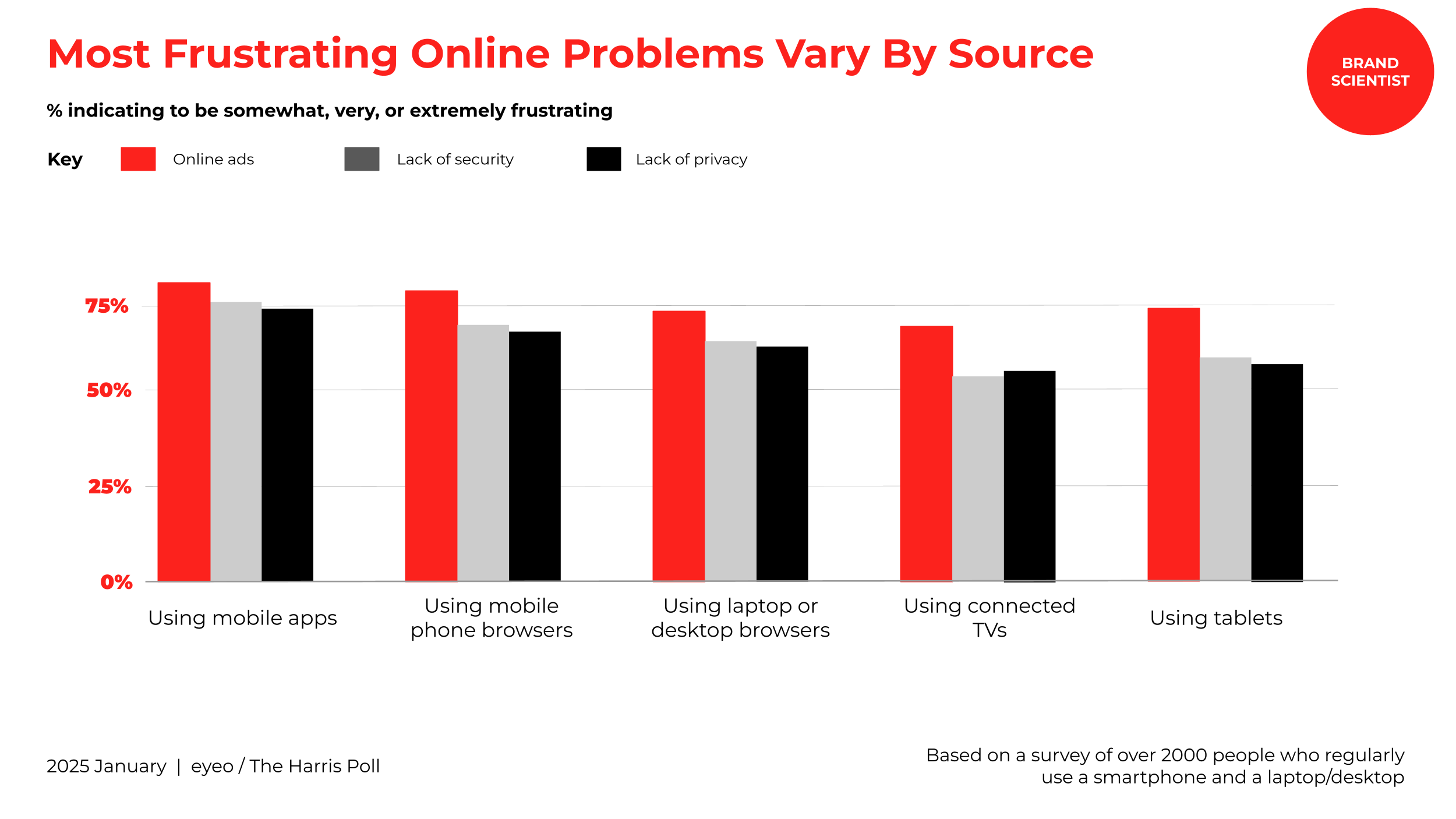Consumers Are Widely Unimpressed By The Digital Ad Experience
Digital advertising now makes up more than two-thirds of global ad spending, yet consumers remain frustrated with the online ad experience, according to research from eyeo and The Harris Poll. While marketers have shifted toward digital platforms to meet audiences where they are, the experience often doesn’t match the less intrusive nature of traditional advertising. Past research even suggests that while marketers favor digital channels, consumers still prefer offline advertising.
One of the biggest pain points for consumers is the intrusive nature of digital ads, particularly pop-ups and excessive interruptions. A vast majority (89%) of respondents believe there should be limits on the number and intrusiveness of ads when visiting websites or streaming free content. Similarly, 89% wish they had more control over the types of ads they see and how they interact with them. Despite this frustration, most (84%) agree that a balance can be found between showing ads and providing free online content.
Online ads are seen as more frustrating than privacy and security concerns, with mobile gaming ads ranked as the most aggravating, followed by ads on video platforms (such as YouTube), content creator streaming services (like Twitch), and other mobile apps. The study highlights that consumers desire more personalized and non-disruptive advertising experiences, reinforcing the need for marketers to optimize digital ads for relevance and user control.
Given these findings, brands should work to improve the digital ad experience by limiting intrusive formats, prioritizing user-friendly ad placements, and offering customization options. A better balance between monetization and user experience can improve engagement while reducing ad fatigue and frustration.
Key Actionable Takeaways:
Limit Ad Intrusiveness – Reduce disruptive formats like pop-ups and autoplay video ads to create a better user experience.
Offer Ad Filtering Options – Implement tools that allow consumers to personalize or control the types of ads they see.
Balance Ad Volume & Content Experience – Ensure a reasonable ad-to-content ratio to avoid overwhelming users and driving them away.
Improve Mobile Ad Experiences – Since mobile gaming and video ads are the most frustrating, optimize these placements to be less disruptive.
Enhance Ad Targeting & Relevance – Deliver more personalized ads based on user behavior to make advertising feel less intrusive and more valuable.
Respect Consumer Privacy Preferences – Address privacy concerns by being transparent about data usage and providing opt-in choices for ad personalization.
Explore Less Intrusive Ad Formats – Use native ads, sponsored content, and skippable video ads to minimize disruption while maintaining engagement.
Test Ad Frequency Caps – Limit how often users see the same ad to prevent ad fatigue and frustration.
Monitor & Adapt to Consumer Sentiment – Regularly collect feedback on ad experiences and adjust strategies to improve user satisfaction.
Find the Right Balance Between Monetization & Experience – Prioritize long-term engagement over short-term revenue by optimizing ad placements for usability.
